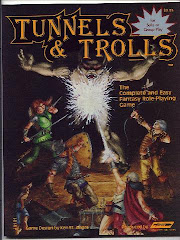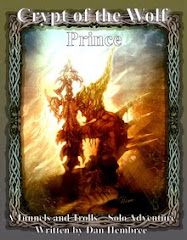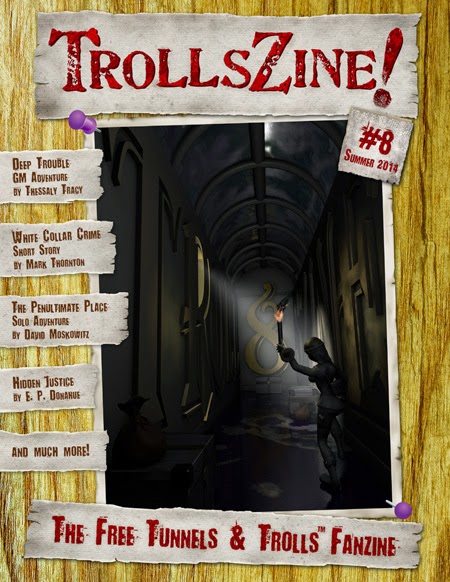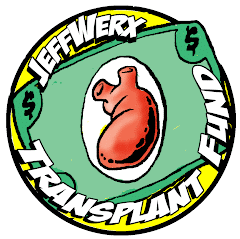Do you need a remedy to cure what ails you? Do you need an edge over the opposition? Do you need to run faster or fly with the eagles? Do you need to see what is hidden or become as big as hill troll? Then we have the solution! Alfred the Alchemist brews magic in a bottle! For a small fee you too can have the power of a Wizard. There is no problem a potion cannot solve*.
*Results are not guaranteed. Certain side effects may occur. Not responsible for any injuries, illnesses, accidents, or deaths that occur with use of these products. All sales are final. No refunds of any kind.
Notes: Upon taking each potion, make a L1SR on LK. Success means the potion worked as intended while failure means that the potion did not work at all. A fumbled SR (result of 3 on 2D6) means something unexpected happened. See the "Fumble Effect" of each potion for details. If a potion does work, once the effects have ended check for possible side effects. See each potion description for details.
Liquid Bandage (Poor Baby)
Heals up to 10 points of CON. It may be consumed all at once or in increments. Only one LK SR is needed to make sure the potion works.
Side Effects: May cause drowsiness; once consumed make a SR on STR at a level equal to the number on CON restored/2 (round down). If the SR is failed, the character becomes very sleepy for 1D6 hours; all SRs are at one level higher and Personal Adds are reduced by half.
Fumble Effects: The potion causes 1D6 in CON damage and causes drowsiness for 1D6 hours.
Cost: 500 gp
Cure All (Healing Feeling)
Heals any kind of disease but does not restore any lost attributes caused by the disease.
Side Effects: Some people are allergic to the ingredients of this potion. Make a L1SR on LK. Failure means you break out in hives and have difficulty breathing. Reduce Personal Adds by half for 1D6 days.
Fumble Effects: The potion causes a wasting disease that results in the loss of 1 point of STR per day until cured.
Cost: 600 gp
All Purpose Antidote (Too Bad Toxin)
Negates the effects of any poison but does not restore any lost attributes or heal wounds.
Side Effects: The power of the antidote can sometimes interfere with nerve function. Make a L1SR on current CON. Failure results in DEX being cut in half for 1D6 hours.
Fumble Effects: The antidote aggressively attacks the users body. Take 1D6 in CON damage and DEX is reduced by half for 1D6 days.
Cost: 800 gp
Avenging Angel (Nefarious Necromancy)
Temporarily revives a dead person for a number of combat turns (~2 minutes) equal to 5 times the LK attribute of the revived person. At the end of this period, the person dies again.
Side Effects: Sometimes the revived person's mind does not completely come back. Make a SR on INT at a level equal to the number of combat turns he or she has been dead. Failure means that the character will attack a target at random, friend or foe.
Fumble Effects: The character is turned into a zombie and will attack whoever gave him the potion. The zombie characters attributes are the same as in life and CON is fully restored.
Cost: 2400 gp (limited stock)
Phoenix Juice (Born Again)
Upon death the character reappears, completely restored, in the nearest Wizard's Guild building. This potion must be consumed before death.
Side Effects: The restoration is not always perfect, and some changes in personality may occur. Make a L1SR on each attribute. Failure means that the attribute is swapped with another randomly determined attribute.
Fumble Effects: The user's body bursts into flames, is reduced to ashes, and cannot be restored by any means.
Cost: 2600 gp
(not currently available)
Bright Eyes Drops (Cateyes)
Provides the ability to see in low light conditions for 30 minutes (not in the total absence of light).
Side Effects: In some individuals, use of these drops may cause extreme sensitivity to light. Make a L1SR on LK. Failure means that even low light makes it difficult to see. Personal adds are reduced by half and all SRs on DEX are one level higher for 30 minutes.
Fumble Effects: The user goes blind for 1D6 hours.
Cost: 400 gp
I See You Drops (Oh There It Is)
Causes all invisible items, doors, and beings to glow with a soft purple radiance for one combat turn (~2 minutes). No effect on beings that are simply hiding or items that are too small to be seen.
Side Effects: Some individuals experience extreme sensitivity to this potion. Make a L1SR on LK. Failure means everything glows for 1D6 combat turns making it difficult to pick out any details or see small objects (like tripwires, pressure plates, coins, etc.).
Fumble Effects: All visible items, door, and beings become invisible while invisible things become visible for 1D6 hours. Have fun!
Cost: 200 gp
Clear Vision Drops (Second Sight)
Allows the user to recognize illusions and see things how they actually are for 10 minutes.
Side Effects: Minor hallucinations may occur with the use of these drops. Make a L1SR on INT after use. Failure means the user sees strange shapes moving around just out of sight. All SRs are one level higher for 10 minutes.
Fumble Effects: The user experiences extreme hallucinations for 1D6 hours. All SRs are two levels higher and Personal Adds are cut in half.
Cost: 1000 gp
Invisibility Elixir (Hidey Hole)
Makes the user invisible for 10 minutes.
Side Effects: Skin may become irritated after use. Make a L1SR on LK. Failure means the users skin become itchy and sore. Increase all DEX SRs by one level for 1D6 hours.
Fumble Effects: The user does not become invisible, but instead his or her skin glows with a bright light for 1D6 hours.
Cost: 400 gp
Metamorphosis Elixir (Imafrawg)
The user can transform into any shape as long as the mass is the same for one hour.
Side Effects: Upon returning to the users original form, some psychological issues may occur. Make a L1SR on INT. Failure means that the user actually thinks he is whatever he transformed into for 1D6 hours making decision making and communication a problem.
Fumble Effects: The user will stay in the form he or she took until a sufficiently powerful Wizard can be found to dispell the transformation.
Cost: 1600 gp
Speed Tonic (Little Feets)
Doubles the users speed for 10 minutes (act twice per combat round).
Side Effects: Some nausea may occur with use. Once the effect ends make a L1SR on current CON. Failure results in nausea, vomiting, and dizziness. All STR SRs are one level higher and Personal Adds are reduced by half for 3D6 minutes.
Fumble Effects: The users speed is cut in half for 1D6 hours.
Cost: 400 gp
Flying Tonic (Fly Me)
Allows the user to fly at normal running speed for 10 minutes while carrying his or her own weight.
Side Effects: Mild vertigo may result from use. Once the effects have worn off make a L1SR on current CON. Failure results in nausea, vomiting, and dizziness for 3D6 minutes. All SRs are one level higher and Personal Adds are reduced by half.
Fumble Effects: The user is able to fly for 1D6 minutes and then the effect suddenly ends. The consequences of this vary depending upon the altitude and speed of travel.
Cost: 600 gp
Teleportation Tonic (Blow Me Too...)
The
user is teleported along with up to 2000 pounds of inanimate material
to any location as long as the user has been there before.
Side Effects: Extreme vertigo may result from use. Once teleportation is complete, make a L3SR on current CON. Failure results in nausea, vomiting, and dizziness for 1D6 days. All SRs are two levels higher and Personal Adds are reduced by three quarters.
Fumble Effects: The user is transported to another dimension.
Cost: 2000 gp
Magic Shield Potion (Shield Me)
Produces an energy shield around the user for 10 minutes that deflects magical attacks (those that cause damage). The strength of the shield is equal to the INT of the user.
Side Effects: The user may experience a loss of magical potency after use. Make a L1SR on current WIZ. Failure means WIZ will not regenerate for 1D6 hours.
Fumble Effects: The shield is formed but it attracts magical attacks. Any spells that cause damage cast in the vicinity of the user will be directed at him or her regardless of the intended target.
Cost: 600 gp
Invincibility Potion (Protective Pentagram)
Produces an energy shield around the user
that deflects all physical and magical attacks for two combat turns.
Side Effects: Users may experience feelings of invulnerability after use. Make a L1SR on INT. Failure results in a careless disregard for personal safety for 1D6 combat turns.
Fumble Effects: The energy shield is formed but immediately begins to collapse upon the user. No actions are possible for two combat turns and 1D6 CON damage is inflicted each turn.
Cost: 800 gp
Magic Resistance Potion (Resist Magic)
Allows the user to resist any one spell directly cast on him or her within one hour of consumption.
Side Effects: Some magical interference may remain after use. Once the spell ends, make a L1SR on WIZ. Failure means any spell (good or bad) cast on the user for the next 1D6 hours has a 50% chance of working.
Fumble Effects: The user becomes a magnet for magical energy. All spells cast in the vicinity of the user will affect her for 1D6 hours.
Cost: 1000 gp
Shrinking Formula (Smaller is Smarter)
The users height, weight, STR, and CON are divided by 1D6+1 for 1D6 hours.
Side Effects: Users may experience some disorientation once returned to their original
size. Make a SR on DEX at a level equal to the size multiplier/2 (round
down). Failure means all DEX SRs are one level higher for 1D6 hours.
Fumble Effects: The shrinking goes farther than expected. Affected attributes are divided by 2D6+1 and lasts for 1D6 days.
Cost: 2000 gp
Growth Formula (Bigger is Better)
The users height, weight, STR, and CON are multiplied by 1D6+1 for 1D6 hours.
Side Effects: Users may experience some disorientation once returned to their original size. Make a SR on DEX at a level equal to the size multiplier/2 (round down). Failure means all DEX SRs are one level higher for 1D6 hours.
Fumble Effects: The growth goes farther than expected. Affected attributes are multiplied by 2D6+1 and lasts for 1D6 days.
Cost: 2200 gp



























